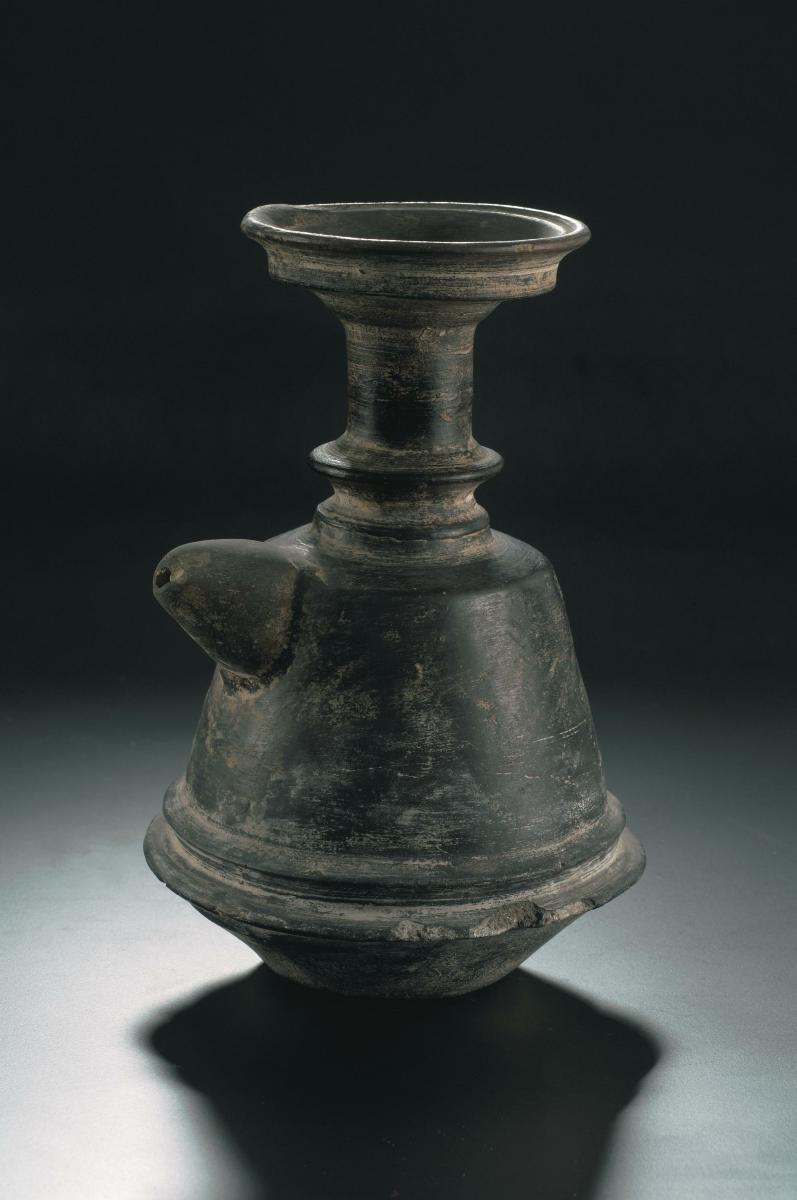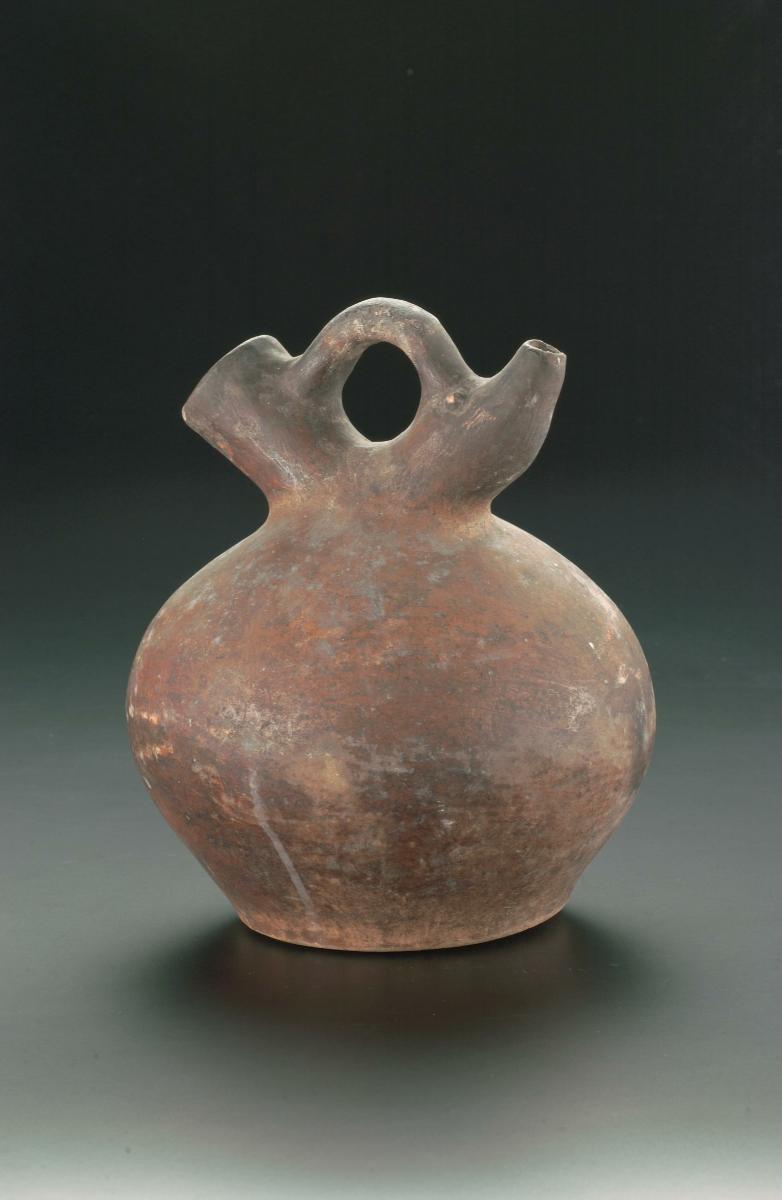This 'kendi' with a tiered stopper has a thick neck and rounded base. It has no discerning decorations.The ‘kendi’ as it is known in Southeast Asia, was reproduced in metal and ceramics in many parts of the region. The name comes from the ancient Sanskrit name for water vessel and it is generally believed that the Southeast Asian ‘kendi’ developed from the Indian ‘kundika’. A typical kendi has a bulbous body, a neck which is used for holding the vessel and a spout. It was used for a wide range of purposes in addition to their primary function as a pouring and drinking vessel. It was also important as a ritual pouring vessel used in weddings and other ceremonies.















